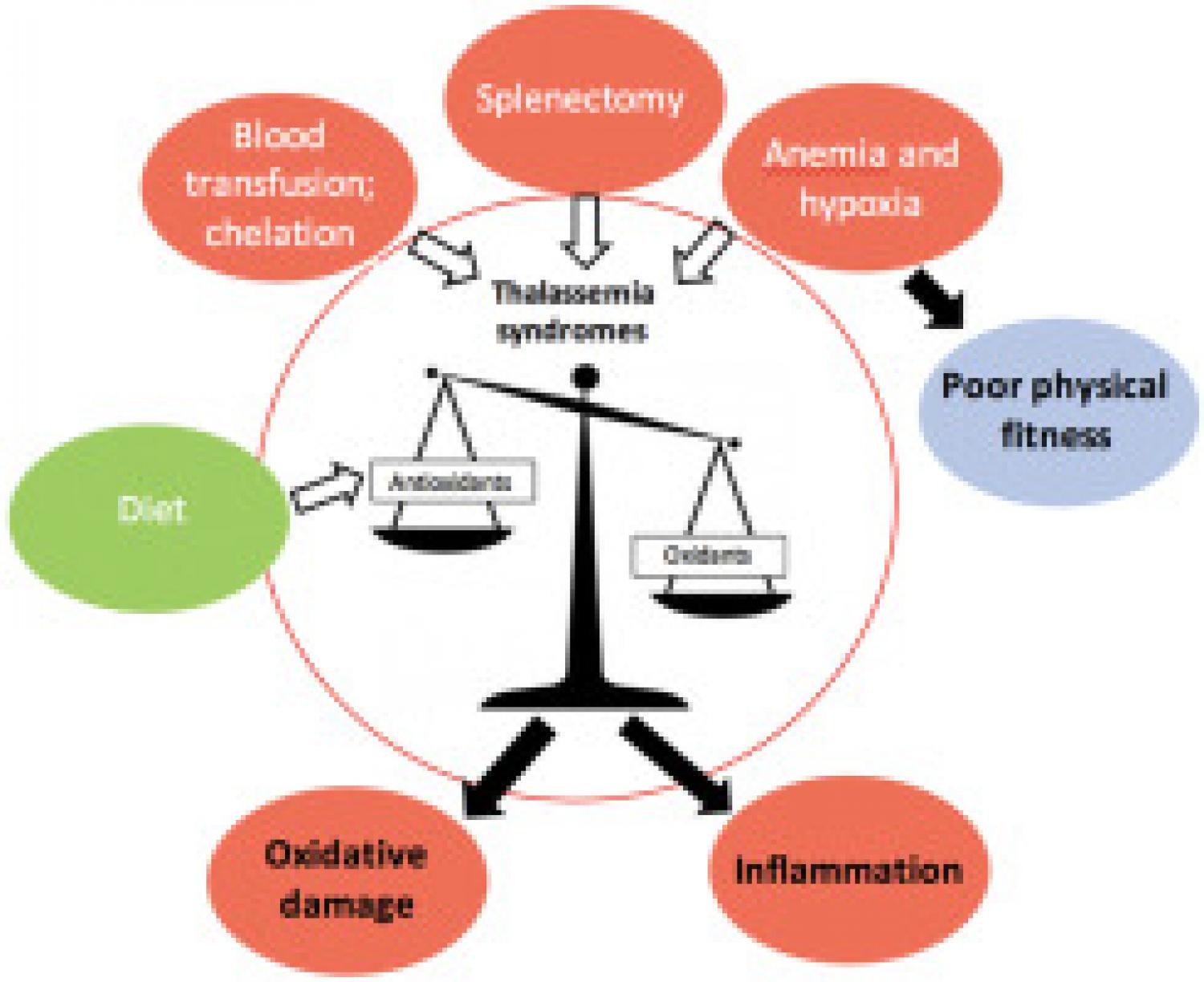
In the β-thalassemias, oxidative stress, resulting from chronic hemolysis, globin chain imbalance, iron overload and depleted antioxidant defences, likely contributes to cell death, organ damage, anemia, hypoxia and inflammation. We assessed variations in these parameters in β-thalassemia syndromes in Sri Lanka. Between November 2017 and June 2018, we assessed children and adults attending two thalassemia centres in Sri Lanka: 59 patients with HbE β-thalassemia, 50 β-thalassemia major, 40 β-thalassemia intermedia and 13 HbS β-thalassemia. Median age was 26.0 years (IQR 15.3–38.8), 101 (62.3%) were female and 152 (93.8%) of Sinhalese ethnicity. Methemoglobin, plasma hemoglobin, heme and ferritin were measured as sources of oxidants; plasma total antioxidant capacity, haptoglobin, hemopexin and vitamins C and E assessed antioxidant status; plasma thiobarbituric acid reactive substances and 8-hydroxy–2′–deoxyguanosine assessed oxidative damage; hemoglobin, plasma erythropoietin and transferrin receptor assessed anemia and hypoxia and plasma interleukin-6 and C-reactive protein assessed inflammation. Fruit and vegetable intake was determined by dietary recall. Physical fitness was investigated using the 6-min walk test and measurement of handgrip strength. Oxidant sources were frequently increased and antioxidants depleted, with consequent oxidative damage, anemia, hypoxia and inflammation. Biomarkers were generally most abnormal in HbE β-thalassemia and least abnormal in β-thalassemia intermedia but also varied markedly between individuals with the same thalassemia syndrome. Oxidative stress and damage were also more severe in splenectomized patients and/or those receiving iron chelation therapy. Less than 15% of patients ate fresh fruits or raw vegetables frequently, and plasma vitamins C and E were deficient in 132/160 (82.5%) and 140/160 (87.5%) patients respectively. Overall, physical fitness was poor in all syndromes and was likely due to anemic hypoxia. Studies of antioxidant supplements to improve outcomes in patients with thalassemia should consider individual patient variation in oxidative status both between and within the thalassemia syndromes.
